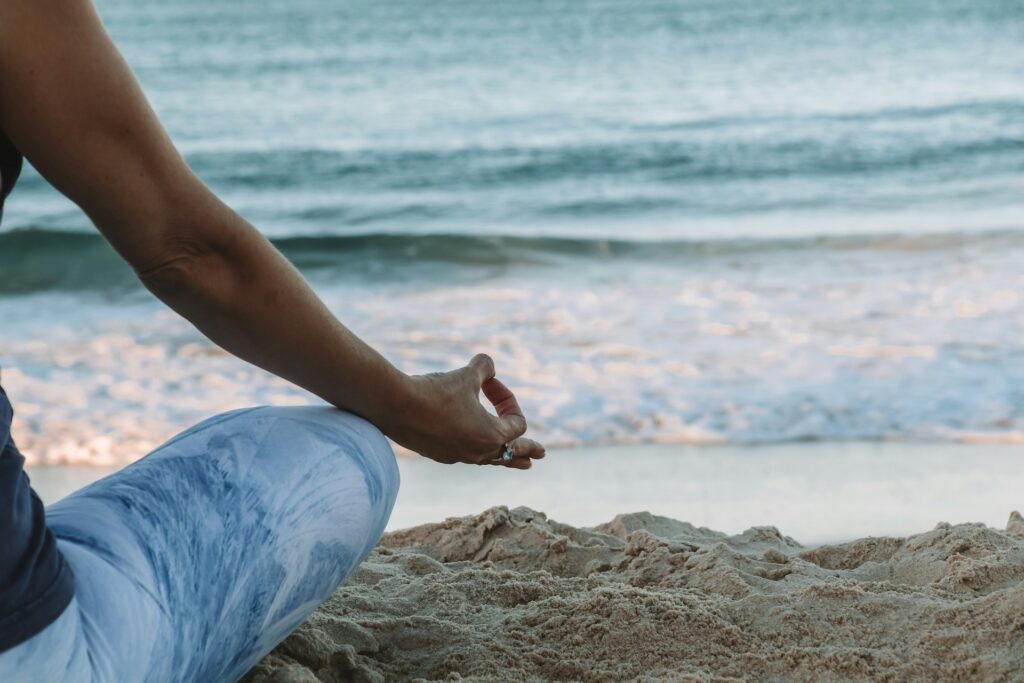The surprising connection between your facial tension and emotional wellbeing that no one is talking about
The 3 a.m. Anti-Aging Rabbit Hole
It happens to the best of us.
There you are, wide awake at 3 a.m., bathed in the blue light of your phone screen, seven tabs deep into “natural ways to reverse aging” searches. You’ve already added three new serums to your cart, bookmarked an intimidating facial exercise regimen, and are now seriously considering whether you should be drinking celery juice every morning.
Sound familiar? If you’re nodding (with furrowed brows), you’re not alone.
What if I told you that one of the most effective things you could do for your appearance and wellbeing isn’t found in a bottle or an expensive procedure, but is literally right between your eyes?
The Tension We Don’t Even Know We’re Holding
Most of us don’t realize how much tension we carry in our faces throughout the day—particularly in our foreheads and between our eyebrows. This area, known as the glabellar complex (or more casually, the “11s” when the wrinkles start to form), is a prime tension-holding spot.
“We hold so much stress in our facial muscles without even realizing it,” says Lisa Chen, a mind-body wellness coach based in Seattle. “When I ask my clients to check in with their face during stressful moments, they’re often surprised to find their jaw clenched and their eyebrows practically meeting in the middle.”
These unconscious habits don’t just contribute to those pesky frown lines. The constant tension can become a feedback loop with our emotional state—creating a continuous cycle of stress that affects everything from our mood to our sleep quality.
The Five-Minute Brow Relaxation Practice
Instead of adding another expensive product to your overflowing skincare shelf, try this simple practice that costs absolutely nothing:
- Find a comfortable position seated or lying down.
- Place your fingertips gently on your forehead, feeling the skin and muscle beneath.
- Take three deep breaths, allowing your face to soften with each exhale.
- Scan for tension – is your forehead cool or warm? Smooth or furrowed? Tight or relaxed?
- With the next exhale, consciously release any gripping in your brow area.
- Rest here for five minutes, occasionally reminding yourself to release when tension creeps back in.
That’s it. No fancy techniques. No equipment. Just you reconnecting with a part of your body that’s probably been tense for so long that the tension feels normal.
Beyond Beauty: The Ripple Effect
Sarah Thompson, 37, a marketing director from Chicago, incorporated this practice into her daily routine six months ago. “I started doing it because I was concerned about the deepening lines between my brows,” she admits. “But what surprised me was how it affected my overall stress levels. It’s like giving my nervous system permission to stand down.”
This makes perfect sense from a scientific perspective. Our facial expressions don’t just reflect our emotions—they can actually influence them. This concept, known as the facial feedback hypothesis, suggests that relaxing the muscles involved in negative expressions can actually help reduce the corresponding negative emotions.
When we consciously relax the muscles between our eyebrows, we’re essentially sending a signal to our brain that says, “It’s safe to relax.” This can trigger a cascade of calming effects throughout the body, potentially lowering cortisol levels and activating the parasympathetic nervous system—our body’s “rest and digest” mode.
From Five Minutes to All Day Awareness
While a dedicated five-minute practice is wonderful, the real magic happens when you start catching yourself in moments of brow-furrowing throughout your day:
- When your email loads slowly
- During tense conversations
- While concentrating on tasks
- When scrolling through social media
- While sitting in traffic
These micro-moments of release can accumulate into significant changes in how you feel and, yes, potentially in how you look.
“I set reminders on my phone three times a day to check in with my face,” says Melissa Ortiz, 42, a teacher from Austin. “It’s become this weird little act of self-care that grounds me in the middle of chaos. My students have even started asking why I look more rested!”
The Anti-Anti-Aging Approach
The irony isn’t lost on me that we’re discussing a practice that might reduce wrinkles in an article that questions our obsession with anti-aging. But there’s an important distinction here: This isn’t about declaring war on your face or seeing your expressions as the enemy.
It’s about becoming curious about the connection between emotional patterns and physical tension—and how releasing unnecessary holding can benefit your wellbeing in multiple dimensions.
“We’ve been taught to fight against our faces,” notes Chen. “But what if we approached our facial tissue with gratitude for all it expresses, and simply invited it to rest when it doesn’t need to be working so hard?”
This perspective transforms a potentially appearance-focused practice into one of mindfulness and self-compassion—values that serve us at any age, through any life stage.
A Gentler Relationship with Your Reflection
Next time you find yourself lost in an anti-aging Google spiral or scrutinizing your reflection with harsh eyes, try this instead:
- Place one hand on your heart.
- Take a deep breath.
- Relax your brow.
- Ask yourself: “What am I really seeking in this moment? Is it really about erasing these lines, or is it about feeling good in my skin?”
The answer might surprise you.
Often what we’re really seeking isn’t another miracle product but a feeling of ease with ourselves—an acceptance of our changing reflection and the life experience it represents.
Relaxing your brow won’t stop time. It won’t erase every line. But it might just help you make peace with the face that’s carried you through your life with all its joys and sorrows—and that’s worth infinitely more than the empty promises in those 3 a.m. Google searches.
Getting Started Tonight
Before bed tonight, try the five-minute brow relaxation practice. Notice not just how your face feels afterward, but how your entire mood may shift. Do it again tomorrow morning. And maybe the next day.
Not because you’re trying to erase who you are, but because you’re giving yourself the gift of release—the chance to put down emotional weights you may not even realize you’ve been carrying.
Your brow will thank you. And so might your nervous system, your sleep quality, and yes, perhaps even those “11s” you’ve been worrying about.
And the next time you find yourself reaching for your phone to dive into the anti-aging rabbit hole, maybe just soften your brow instead and whisper to yourself: “I’m exactly where I need to be, and my face is telling my perfectly unique story.”

Disclaimer: This article provides general information and discussion about health and related subjects. The information and other content provided in this article, or in any linked materials, are not intended and should not be construed as medical advice, nor is the information a substitute for professional medical expertise or treatment. If you or any other person has a medical concern, you should consult with your healthcare provider or seek other professional medical treatment. Never disregard professional medical advice or delay in seeking it because of something you have read in this article.



